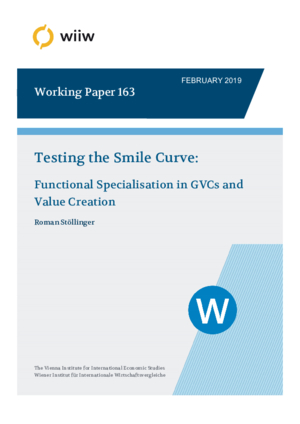Testing the Smile Curve: Functional Specialisation in GVCs and Value Creation
wiiw Working Paper No. 163, February 2019
45 pages including 13 Tables and 13 Figures
According to the ‘smile curve hypothesis’ the potential for generating value added varies significantly across the various functions along a firm’s value chain. It suggests in particular that the production stage is the least promising value chain function in the entire manufacturing process. This logic implies that countries specialising as ‘factory economies’ are likely to generate comparatively little value added. To shed light on the relationship between functional specialisation along the value chain and value creation, this paper develops measures for functional specialisation derived from project-level data on greenfield FDI for a global sample of countries. These measures keep the industry and the functional dimension of specialisation strictly apart. They are used to test econometrically the negative relationship between value added creation and functional specialisation in production as predicted by the smile curve hypothesis.
Keywords: functional specialisation, global value chains, smile curve, factory economy, greenfield FDI
JEL classification: F60, L23, F20
Countries covered: East Asia, European Union, NAFTA
Research Areas: International Trade, Competitiveness and FDI
